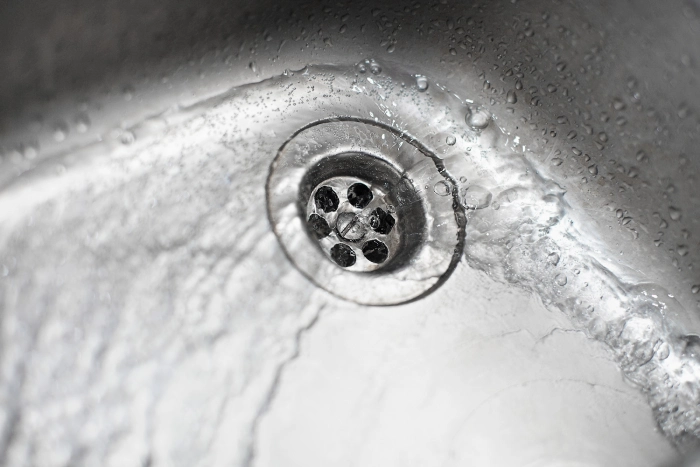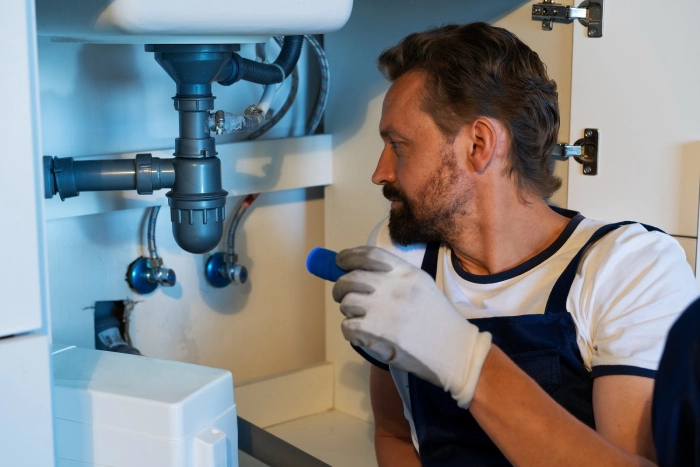
A clogged bathroom sink in Minneapolis can pose a significant problem, disrupting your daily routine and potentially causing water damage if left unaddressed. Whether it’s a slow drain or a complete blockage, knowing how to tackle this common household issue can help you save time, money, and frustration. In this comprehensive guide, we’ll walk you through the step-by-step process of unclogging your bathroom sink effectively.
The Causes of a Clogged Bathroom Sink
By understanding the various causes of bathroom sink clogs and taking preventive measures to address them, homeowners can reduce the likelihood of experiencing drainage problems and maintain the proper functioning of their plumbing systems. Here are some common causes:
Hair
Hair is a significant culprit in bathroom sink clogs, particularly long strands that easily tangle and accumulate. When hair enters the drain, it can get caught on rough edges or protrusions inside the pipes, eventually forming a blockage.
Soap Scum
Soap scum is a filmy residue left behind when soap combines with minerals in the water. It can adhere to the walls of the pipes and accumulate over time, narrowing the passage for water flow. As soap scum builds up, it can trap other particles and contribute to the formation of clogs. Bar soap is particularly prone to leaving soap scum residue compared to liquid soap.
Dirt and Debris
Dirt, toothpaste residue, skin cells, and other particles can all contribute to clogs in bathroom sinks. These substances can gather inside the drain and along the walls of the pipes, gradually reducing the pipe’s diameter and hindering water flow. Regular cleaning and upkeep can help prevent the buildup of dirt and debris.
Foreign Objects
Small objects accidentally dropped into the sink, such as jewelry, toothpaste caps, or cotton swabs, can become lodged in the drain and cause blockages. Children are especially prone to dropping items into sinks without realizing the potential consequences.
Mineral Buildup
Hard water harbors high levels of minerals such as calcium and magnesium, which can precipitate out of the water and form deposits inside the pipes. Over time, these mineral deposits can accumulate and restrict water flow, leading to clogs. Using a water softener or regularly treating the pipes with a descaling solution can help prevent mineral buildup.
Faulty Plumbing Installation
Inadequate slope or venting in the plumbing system can cause drainage problems and contribute to clogs. If the pipes are not properly sloped, water may pool and accumulate debris instead of flowing smoothly toward the sewer or septic system. Similarly, inadequate venting can create suction or airlock issues that impede proper drainage.
Tree Roots
In rare cases, tree roots can penetrate underground pipes in search of water and nutrients. Once inside the pipes, tree roots can cause blockages and damage the plumbing system, leading to slow drainage or complete clogs. This issue often requires professional assistance to identify and resolve, potentially involving the use of specialized equipment to clear the roots from the pipes.
Step-by-Step Guide to Unclogging a Bathroom Sink
Now that we’ve explored the common causes of bathroom sink clogs let’s explore the step-by-step process of unclogging your sink effectively. Depending on the severity of the clog, you may need to try multiple methods to achieve success. Here’s what you can do:
Step 1: Remove Any Visible Debris
Start by removing the sink stopper or drain cover to access the drain opening. Use a flashlight to check the drain for any visible debris, such as hair, soap residue, or foreign objects. Utilize needle-nose pliers or tweezers to pull out any obstructions that are within reach.
Step 2: Try a Plunger
If the clog persists after removing visible debris, try using a plunger to dislodge it. Ensure there is enough water in the sink to cover the bottom of the plunger, then position the plunger over the drain opening and firmly press down and up repeatedly. This action creates suction that can help break up the clog and push it through the pipes.
Step 3: Use a Plumbing Snake
If the plunger doesn’t work, or if the clog is deeper in the pipes, you may need to use a plumbing snake (also known as a drain auger). Place the snake into the drain opening and slowly feed it into the pipe while turning the handle clockwise. Keep pushing and twisting the snake until you encounter resistance, then crank the handle to break through the clog. Continue feeding the snake into the pipe until you’ve cleared the obstruction.
Step 4: Try a Homemade Drain Cleaner
If the clog is caused by organic material such as hair or soap scum, you can try using a homemade drain cleaner to dissolve it. Combine equal quantities of baking soda and vinegar in a cup, then pour the resulting solution down the drain. Let it sit for about 15 minutes to fizz and break up the clog, then flush the drain with hot water.
Step 5: Use a Commercial Drain Cleaner
If homemade remedies don’t work, you can try using a commercial drain cleaner. Adhere closely to the instructions on the product label, as these cleaners contain powerful chemicals that can be harmful if used incorrectly. Pour the designated amount of cleaner down the drain and allow it to sit for the prescribed duration before flushing with hot water.
Step 6: Call a Professional
If you’ve tried all of the above methods and the clog still won’t budge, it may be time to call a professional plumber. They have the expertise and specialized equipment to tackle stubborn clogs and identify underlying issues with your plumbing system. Don’t hesitate to seek professional help if needed to avoid further damage to your sink and pipes.
FAQs

Can I use bleach to unclog my bathroom sink?
Bleach can help remove organic matter and disinfect your sink, but it’s not typically effective for clearing clogs. Bleach may also damage plumbing fixtures and pipes, especially if they’re made of metal. It’s best to use safer alternatives like baking soda and vinegar or commercial drain cleaners specifically designed for unclogging sinks.
How often should I clean my sink drain to prevent clogs?
It’s a good idea to clean your bathroom sink drain regularly to prevent clogs from forming. Depending on usage and how prone your sink is to clogging, cleaning it once a month or every few months should suffice.
How can I prevent future clogs in my bathroom sink?
There are various steps you can take to prevent clogs in your bathroom sink. These include using a drain cover or stopper to catch hair and debris, refraining from pouring grease down the drain, and being cautious about what goes down the sink. Additionally, make sure to clean the cover or stopper regularly and flush the drain with hot water to deter buildup.
Conclusion
This guide equips you with the knowledge to address a clogged bathroom sink effectively. Understanding common causes and following the outlined steps can save time, money, and hassle. It’s crucial to promptly seek the expertise of a professional plumber when faced with persistent clogs. With their assistance, you can guarantee the long-term functionality of your bathroom sink drains through regular maintenance.
Are you experiencing recurring clogs or other plumbing issues with your bathroom sink? True Plumbing Solutions has you covered. Our expert plumbers specialize in fixing all kinds of bathroom plumbing issues quickly and efficiently. Don’t let a clogged sink ruin your day – contact us now for reliable help.

